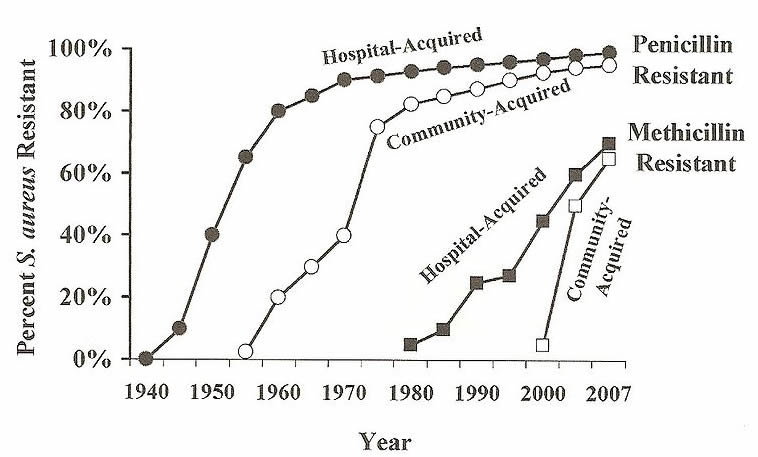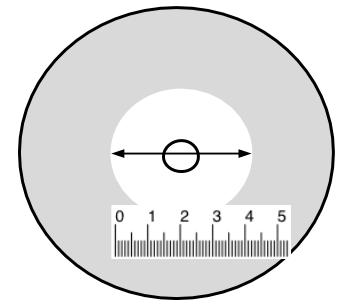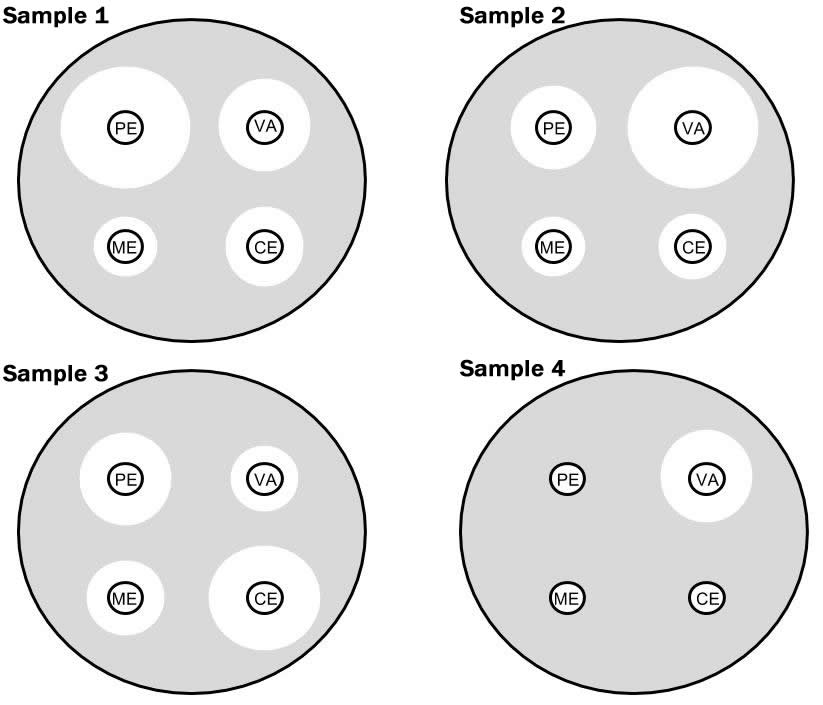what methods would hospitals employ to eliminate mrsa
Proper name:_____________________________________ Date:____
Case Written report: How Do Bacteria Become Resistant?

Part ane: What is MRSA?
No matter what doctors did, the baby's oxygen levels were dropping every bit a drug resistant bacteria were eating holes in the lungs of the 7 week old. Fifty-fifty the nigh powerful antibiotics could non finish the infection. Simply two days ago, Madeline had started coughing, a symptom the doctor dismissed as a viral infection. Then Madeline's mother plant her limp and blue in her crib and she was rushed to the hospital. She was diagnosed with sepsis and a virulent pneumonia that was destroying her lungs. It was MRSA.
The methicillin-resistant class of the bacterium commonly known as staph was first identified in the 1970'south in hospitals, but it has since spread across the world, showing up in solar day cares, schools and other public spaces. Today, ane.2 one thousand thousand MRSA infections occur in hospitals in the U.South. and invasive MRSA kills over xix,000 per year. The bacterium can sometimes "colonize" a person and not cause disease. The person can behave it on their bodies for years and pass them to other people or leave them on surfaces. Hospitals have mounted aggressive campaigns to eliminate MRSA from their facilities.
Madeline's parents wondered how she had contracted this dangerous bacterium. Madeline's family agreed to tests to determine if whatever of them were conveying the deadly bacteria or if the child contracted the bacteria from the hospital. The hospital protested, claiming that their facility is not the source of MRSA.
In the past, penicillin was used to treatStaphylococcusaureus infections. Shortly after,S.aureus became resistant to penicillin. During the 1950s, derivatives of penicillin was discovered past pharmaceutical companies that could care forStaphylococcusaureus. The graph below depicts the Spread of Antibody-ResistantSouthward.aureus Infections in the Usa. Separate curves are shown for bacteria that caused infections in the infirmary ("Hospital-Acquired") and in healthy people in the community ("Community-Caused").

1. Based on the graph, make an inference about where the "community acquired" penicillin resistant S. aureus originated from.
2. Why did methicillin resistance lag behind penicillin resistance? Based on the trend seen with penicillin, what would you expect to see happen with methicillin?
Part 2: MRSA Screening
A methicillin resistantStaphylococcus aureus (MRSA) screen is a test that looks for the presence of MRSA and no other pathogens. It is primarily used to identify the presence of MRSA in a colonized person. On a customs level, screening may be used to help determine the source of an outbreak. On a national level, additional testing may inform clinicians and researchers about the unique genetic characteristics of the strains of MRSA circulating in the community or health care setting.
 A nasal swab is collected from the nares (nostrils) of an asymptomatic person and cultured (put onto a special nutrient medium, incubated, and then examined for the growth of feature MRSA colonies). A swab may be collected from a wound site or skin lesion of a person who has been previously treated for a MRSA infection and cultured similarly. A screening culture identifies the absenteeism or presence of MRSA and usually takes 1 to 2 days for a result.
A nasal swab is collected from the nares (nostrils) of an asymptomatic person and cultured (put onto a special nutrient medium, incubated, and then examined for the growth of feature MRSA colonies). A swab may be collected from a wound site or skin lesion of a person who has been previously treated for a MRSA infection and cultured similarly. A screening culture identifies the absenteeism or presence of MRSA and usually takes 1 to 2 days for a result.
When studying how bacteria answer to antibiotics, the Kirby-Bauer disk improvidence method is used. In this technique, discs containing antibiotics are placed on agar where bacteria are growing, and the antibiotics diffuse out into the agar. If an antibiotic stops the bacteria from growing, we tin run across circular areas effectually the wafers where bacteria have not grown. This area is called the "zone of inhibition." The diameter of these zones is measured as shown below.
iii. What methods would hospitals use to eliminate MRSA from their facilities?
4. What is a "strain" of bacteria? How is is possible that some strains of Staphylococcus aureus tin exist harmless, but others can be deadly? (You may need to google this.)
5. A young scientist suggests that a chemic found on the skin of frogs tin can exist used as an antibiotic. Explain how the Kirby-Bauer disk technique could be used to support this hypothesis.
six. Consider the data gathered from the frog-skin experiment. What conclusion would you draw from the data?
| Site | Zone of Inhibition |
| Frog Skin | 1.2 cm |
| Penicillin | 3.9 cm |
| Amoxicillin | 3.six cm |
| Control | 0.1 cm |
Part 3: Analyzing the Plates
Each plate beneath represents a sample taken in the investigation. Nasal swabs were taken from individual family members and 2 samples were taken from the hospital delivery room. The samples were grown on agar with antibiotic disks added.
PE = penicillin | ME = methicillin | CE = cephalothin | VA = vancomycin
Measure the zones of inhibition on the plates and record the data in the table.

| Sample | Disk | Zone Size | Sample | Disk | Zone Size | |
| 1 | PE | iii | PE | |||
| ME | ME | |||||
| CE | CE | |||||
| VA | VA | |||||
| 2 | PE | 4 | PE | |||
| ME | ME | |||||
| CE | CE | |||||
| VA | VA |
Part 4: Conclusions
half dozen. The following table identifies the sample sources. Which sample contains MRSA? How do you lot know?
| Sample 1 | Madeline's Mother |
| Sample 2 | Madeline'southward Sister |
| Sample 3 | Madeline's Father |
| Sample 4 | Delivery Room Surface |
7. Sample 2 was taken from a nasal swab of a family member who has been having sinus infections. What grade of antibiotics would you recommend?
8. What recommendations would you brand to Madeline'south family and the hospital where Madeline was delivered. Your recommendations should include evidence-based reasoning and details from the case to back up your position.
Source: https://www.biologycorner.com/worksheets/case_study_bacteria_resistance.html
0 Response to "what methods would hospitals employ to eliminate mrsa"
Postar um comentário